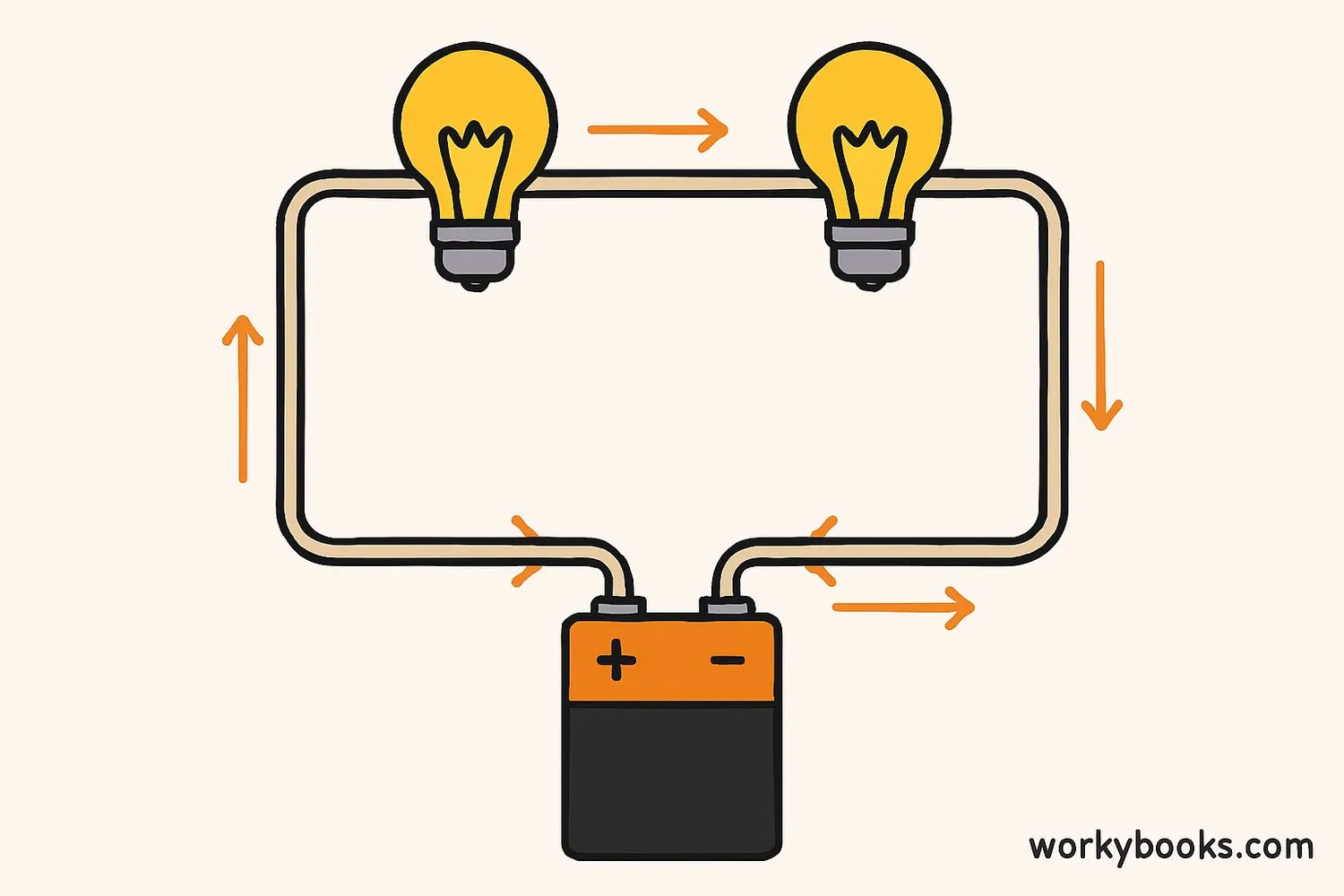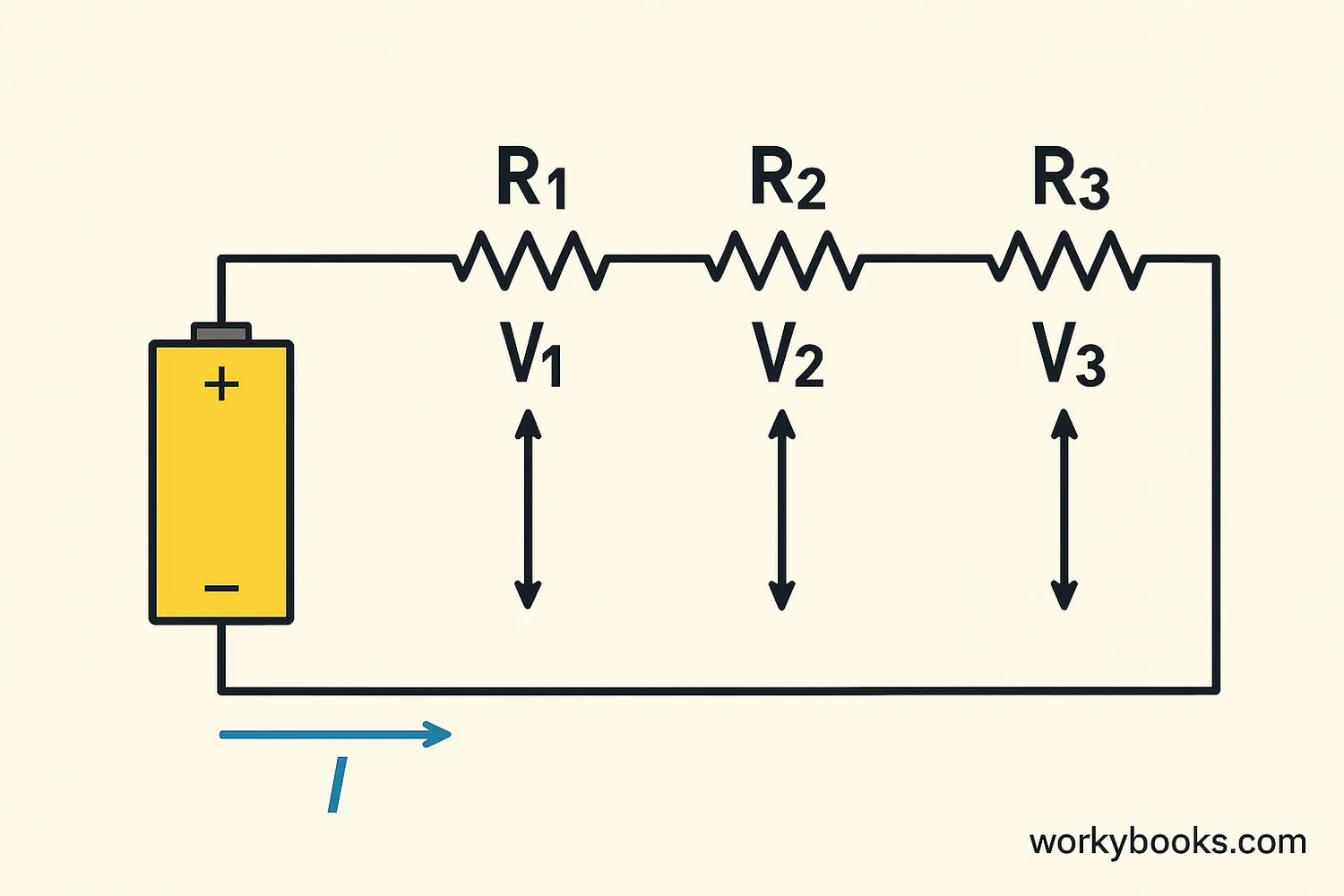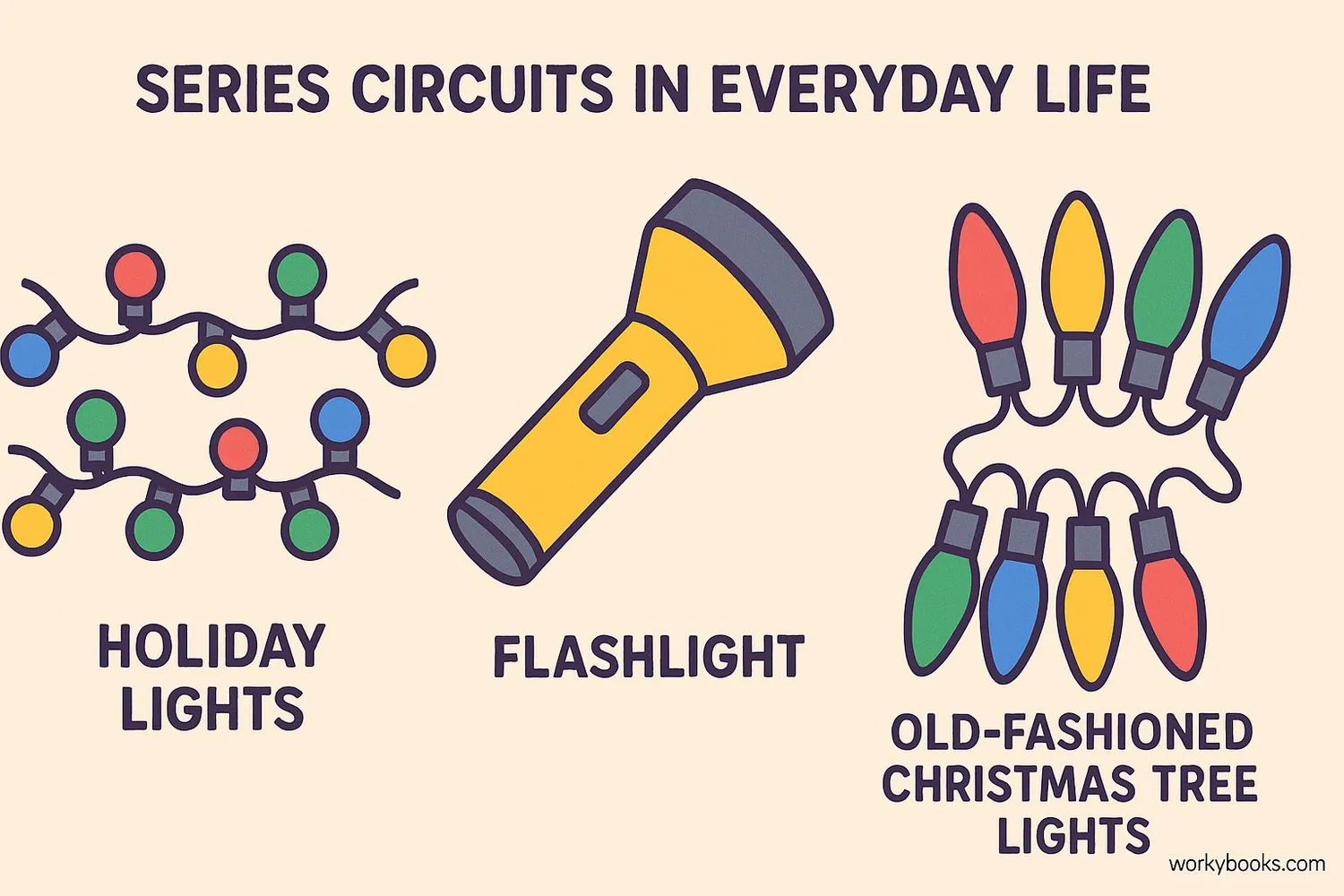Series Circuits - Definition, Examples, Quiz, FAQ, Trivia
Learn how electricity flows through connected components in a single path
What is a Series Circuit?

A series circuit is a type of electrical circuit where components are connected one after another in a single path. The electric current has only one route to follow from the power source through all the components and back again.
Imagine a string of holiday lights where all the bulbs are connected in a single line. If one bulb goes out, all the bulbs go out because the electrical path is broken. This is the key characteristic of a series circuit!
Key Point
In a series circuit, the same amount of current flows through every component because there's only one path for electricity to follow.
How Series Circuits Work

Understanding how series circuits work involves learning about three important electrical concepts: current, voltage, and resistance.
Current Flow
The same current flows through all components in a series circuit
Voltage Division
Voltage is shared between components based on their resistance
Total Resistance
The total resistance is the sum of all individual resistances
Single Path
Electricity follows exactly one path through all components
Circuit Breaking
If any component fails, the entire circuit stops working
The mathematical relationship in series circuits follows Ohm's Law (V = I × R), where:
• Total Resistance (Rtotal) = R1 + R2 + R3 + ...
• Current (I) is the same throughout the circuit
• Total Voltage = Sum of voltages across each component
Circuit Fact!
In a series circuit, components with higher resistance use more of the available voltage, just like how a steep hill uses more of a ball's energy when rolling down.
Real Examples of Series Circuits

Series circuits are used in many everyday devices. While they're less common in complex electronics, they're perfect for simple applications where you want the same current flowing through all components.
Holiday Lights
Old-fashioned Christmas lights where if one bulb burns out, the whole string goes dark
Flashlights
Simple flashlights with multiple bulbs connected in series to the battery
Doorbells
Some doorbell systems connect the button, transformer, and chime in series
Series circuits are also used in:
• Some types of decorative lighting
• Simple electrical toys and gadgets
• Battery testing equipment
• Current-limiting applications in electronics
While parallel circuits are more common in home wiring, series circuits still have important uses where their unique properties are beneficial.
Series Circuit Quiz
Test your knowledge about series circuits with this quiz. Answer all 5 questions to see how much you've learned.
Frequently Asked Questions
Here are answers to common questions about series circuits:
Circuit Trivia
Discover interesting facts about series circuits and electricity!
Historical Circuits
The first electric circuits created in the 1800s were mostly series circuits because they were simpler to construct and understand with early electrical components.
Holiday Lights
Modern holiday lights use special shunts that allow current to bypass a burned-out bulb, making them act more like parallel circuits even though they're wired in series.
Safety First
Series circuits are used in some safety devices like fuses and circuit breakers because they can shut off all power when a fault is detected.
Measurement Tools
Ammeters (devices that measure current) are always connected in series with the component being measured because current is the same everywhere in a series circuit.


